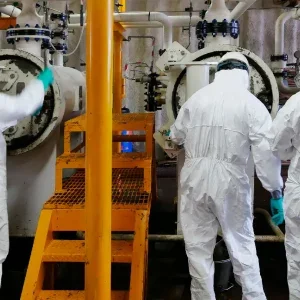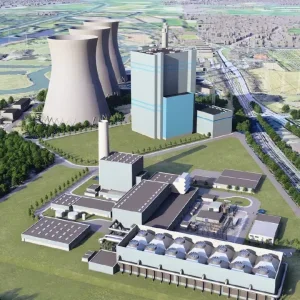
Over the past two decades, liquefied natural gas (LNG) has emerged as a significant component of the global gas balance with growth of approximately 7% a year since 2000.
And, despite the current softness of the market, analysts’ and operators’ forecasts agree its importance is only going to increase moving forward – something integrated natural gas company BG Group is more than ready to capitalise on.
In its most recent annual World Energy Outlook, the International Energy Agency (IEA) predicted that while natural gas would play a growing role in the world’s energy mix up until 2035 (growing from 21% in 2010 to 25% in 2035), LNG demand growth would be even stronger. By 2030, global LNG demand could be almost double that of the estimated 2012 level of approximately 250 million tons, the intergovernmental body forecasted.
Demand is set to come mainly from Asia, Europe and South America. Zooming in on the current situation, though, demand growth for natural gas is nowhere near where it is predicted to be in the coming years.
Chilling effect
In fact, according to the IEA’s ‘Medium-Term Gas Market Report 2014’, global gas demand growth would have been zero in 2013 without unusually cold winters in Europe and the US, with OECD gas demand growing by 1.1% and non-OECD demand by 1.2%. However, this has dampened the spirits of neither industry analysts nor multinational oil and gas company BG Group, which not only believes the market will remain tight until at least 2020; it is also keen to stress that, thanks to its flexibility, diverse supply base and strong inventory of new projects, it is enviably placed to capitalise on what is – overall – a positive demand growth picture for LNG.
"We expect the global LNG market to remain tight for the foreseeable future, likely through to the end of the decade," confirms the company’s head of LNG strategy Andrew Walker. "We believe the current softness is short term and will correct as we enter the northern hemisphere winter.
"We believe that the structural flexibility that we have built into our business gives us an advantage under these conditions."
Underpinning everything: flexibility solutions
Asia is set to be the biggest growth region for LNG demand, with China and India expected to propel a 9% growth in regional demand through 2025, according to Bernstein Research. And according to Walker, BG Group is more than ready for this.
"We have the ability to supply markets from multiple sources, and one of the largest LNG fleets operated by an international company, which means we can respond swiftly to structural demand shifts in the industry," he explains. "All our Atlantic basic supply was originally intended to be sold into the US market. Now, because of our flexible LNG supply portfolio, we sold the majority of this supply into Asia, where it is most needed."
Moreover, while most of the company’s LNG sales are made on long-term arrangements, BG Group also leaves a portion of its portfolio uncontracted, giving it the flexibility to respond when customers’ needs change.
"With our approach, customers are not tied to the output of a single LNG plant, which enhances reliability of supply," notes Walker. "Also, our contracts are structured so that customers can better manage their supply to match their specific needs around volume and timing."
Historically, this flexible approach has underpinned BG Group’s LNG strategy at every step, Walker emphasises. "In the early 2000s, we acquired LNG ship capacity and regasification rights at the Lake Charles import terminal in the US. That allowed us to build an independent LNG marketing business into the US market. It also provided a flexible gas market upon which to base our portfolio business model," he recalls.
Then, from 2002 to 2007, the company started lifting long-term equity LNG from Trinidad and Tobago, and Egypt, as well as third-party long-term LNG cargoes from Equatorial Guinea and Nigeria. "We ensured that these contracts were flexible," Walker says.
From 2007, BG Group shifted its deliveries away from the US by entering mid-term sales contracts with the growing LNG market in Asia, and between 2008 and 2011 it continued to expand the business. "This was including through the launch of our next wave of supply, sanctioning the Queensland Curtis LNG (QCLNG) project in Australia, and signing the first US export supply contract from the Sabine Pass liquefaction project," Walker notes.
This flexibility has given BG Group a market "breadth" that very few can match, Walker believes. "We have bought LNG cargoes from 14 out of the 19 currently exporting countries and supplied LNG cargoes to 26 out of 27 of the currently importing countries," he says. "And we believe our approach provides our customers with flexibility and reliability."
Australia: key to meeting Asian demand, but challenging
The company’s new QCLNG project in Australia, which is set to produce its first LNG later this year, will be key to meeting growing Asian demand. "This will introduce new material supplies into our portfolio, well located to Asian markets," says Walker.
Yet, he is realistic about how quickly this project will have a real impact on the market. "Mega projects like QCLNG are complex and challenging. While we have achieved a great deal since the project was sanctioned in 2010, we have much left to do," he says.
There are four key steps towards first LNG as the company progressively commissions key pieces of equipment, he explains:
- Commissioning of the gas turbine generators: this has started and will supply the liquefaction plant with power. In August, the main flare was lit at the LNG plant.
- Mechanical start-up of six compressor stations in the gas fields, which will supply feed gas to the plant: this is scheduled for September 2014.
- The introduction of gas into Train 1 of the LNG plant: this is scheduled for October 2014.
- The liquefaction process (drying out the gas, defrosting and cooling down): this can begin once all the other steps
are complete and gas is flowing through the LNG production train.
BG Group is making good progress, says Walker, but there is potential in any process of this scale and complexity to encounter technical issues, or what he refers to as "unknown unknowns".
"Moreover, in June, the original four-year labour agreement expired between Bechtel, the contractor building the liquefaction plants on Curtis Island, and the unions representing the workforce, and any industrial action would clearly put the overall programme schedule at risk," Walker adds. "Naturally, if there is an impact to our target of first LNG in Q4 we will inform the market."
Latin America productive, Egypt uncertain
Elsewhere, BG Group is ramping up production at its operations in Brazil in order to meet the robust demand continuing to come from Latin America, due largely to droughts, which have led countries such as Colombia and Brazil to find additional supplies of gas to compensate for the lack of hydropower.
"Brazil is a strategically important country in BG Group’s portfolio, providing significant reserves of oil and gas, and easy access to global crude-oil markets," Walker notes.
Indeed, since 1994, the company has invested more than $7 billion in Brazil’s oil and gas sector, and now participates in five large pre-salt discoveries in the Santos basin – Lula, Iracema, Sapinhoá, Lara and Lapa – as well as operating in ten blocks in the Barreirinhas basin.
"To date, the reservoirs have been very productive, characterised by strong flow rates and requiring fewer wells," Walker notes, adding that, looking forward, collaboration will be key to BG Group’s future success in the region. "Importantly, we have good relations with the operator of our Santos basin acreage, Petrobras, and are aligned on development."
Yet, the picture for BG Group isn’t quite as positive in Egypt, where political and social instability has led to declining production. "Egypt has had a significant impact," Walker remarks. "With decreasing gas production and supplies being diverted to the domestic market, we lifted one LNG cargo from the liquefaction plant at Idku in the first half of 2014, compared with 14 in the same period a year ago.
"And, while our guidance of total operating profit for LNG shipping and marketing business in 2014 of $2.1 billion to $2.4 billion is unchanged, operating in Egypt is challenging. There are no easy fixes, and we expect the contribution of Egypt to earnings to probably reduce over time. In the absence of concerted action from the Egyptian Government, the future commercial operation of Egyptian LNG remains uncertain."
The overall picture: positive, but not instant
As well as launching new operations in Australia and ramping up production in Brazil, BG Group is also set to bring new LNG supply into its portfolio from the US towards the end of 2015 or in early 2016, as well as investigating new LNG projects in western Canada and Tanzania.
But the impact of these new developments will by no means be instant. Moreover, while the company’s strong inventory of new projects combined with its flexibility puts it in an excellent spot to capitalise on growing global LNG demand in the coming years, the production slowdown in Egypt has hit BG Group relatively hard recently.
"Our portfolio volumes have declined slightly in recent years, primarily due to the impacts of Egypt," Walker notes. "However, we expect new projects in Australia and the US to expand our LNG portfolio supply from nearly 11 million tons per annum (mtpa) in 2013 to around 22mtpa in 2017, starting with QCLNG in Australia in Q4 2014.
"This represents a doubling of our portfolio in the next three years. In addition, oil volumes from Brazil will continue to increase, and our target of free cash flow for 2015 remains in place."
Ultimately, the company’s actions will always boil down to one thing, Walker concludes. "The goals we set for our LNG business don’t change; we’re focused on supplying our customers with LNG when and where they need it, in the quantities they require, in a safe, reliable manner."






